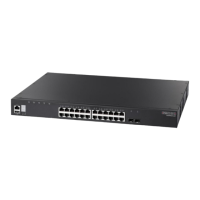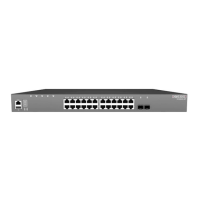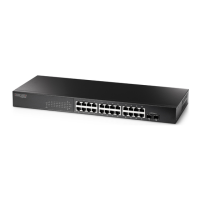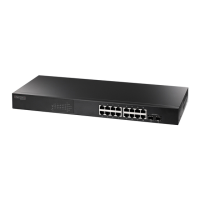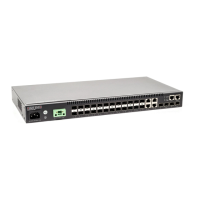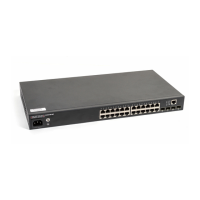Chapter 19
| Unicast Routing
Configuring the Routing Information Protocol
– 708 –
A route metric must be used to resolve the problem of redistributing external
routes with incompatible metrics.
When a metric value has not been configured on this page, the default-metric
determines the metric value to be used for all imported external routes.
It is advisable to use a low metric when redistributing routes from another
protocol into RIP. Using a high metric limits the usefulness of external routes
redistributed into RIP. For example, if a metric of 10 is defined for redistributed
routes, these routes can only be advertised to routers up to 5 hops away, at
which point the metric exceeds the maximum hop count of 15. By defining a
low metric of 1, traffic can follow an imported route the maximum number of
hops allowed within a RIP domain. However, using a low metric can increase
the possibility of routing loops For example, this can occur if there are multiple
redistribution points and the router learns about the same external network
with a better metric from a redistribution point other than that derived from
the original source.
Web Interface
To import external routing information from other routing domains:
1. Click Routing Protocol, RIP, Redistribute.
2. Select Add from the Action list.
3. Specify the protocol types (directly connected, BGP, OSPF, or static) from which
to import external routes, and the metric to assign to these routes.
4. Click Apply.
Figure 473: Redistributing External Routes into RIP
To show external routes imported into RIP:
1. Click Routing Protocol, RIP, Redistribute.
2. Select Show from the Action list.
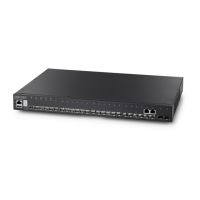
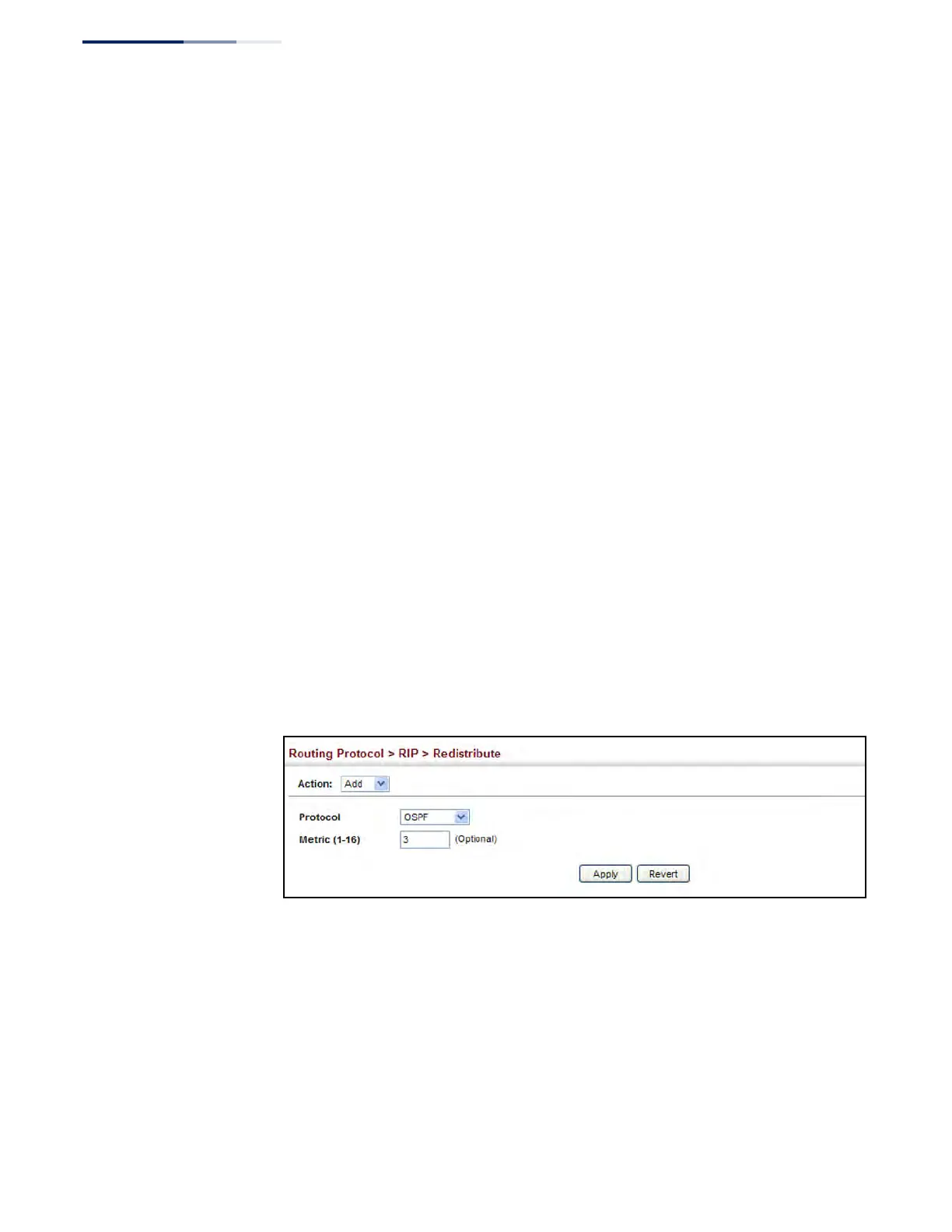